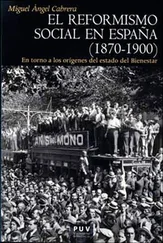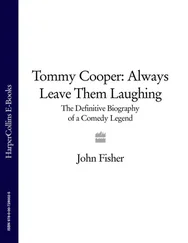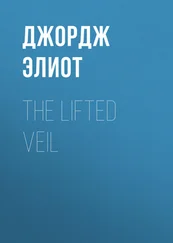William R. Handley and Nathaniel Lewis’ ideas, expressed in their book True West: Authenticity and the American West , define authenticity as a notion dealing with authority and originality rather than with truth. Barber’s account of her childhood and teenage years in How I Got Cultured: A Nevada Memoir , as well as the first-person narration of her fiction, seeks to undermine interpretations of historical facts such as the bomb tests; the construction of the Hoover Dam, and the development of Las Vegas. This is achieved through a self-reflecting authority that translates into an original interpretation of those facts, not really claiming her experience as truth but rather as a zone of tension where language approaches historical facts in such a personal communication that it proposes new terms. Scott Slovic presents this same idea of the zone of tension when he reports on an interview he and Terre Satterfield made with Gary Nabhan in 1998. There, Nabhan proposes the idea of a zone of tension as “a form of language that facilitates understanding because it obstructs easy, linear thinking” (Slovic, Authenticity 263). Neil Campbell’s ideas in The Rhizomatic West are along the same lines, in Campbell’s proposal that a complex and singular perspective upon the American West seems useful and coherent both for some of the specific considerations that I develop in this book but also—in a general way—for the sake of the rhizomatic. Understanding the rhizomatic as a theory that tries to comprehend chaos and paradox, it also provides a productive approach to Barber’s message and, secondly, the appreciable conclusions about Mormon culture that her search for individuality uncovers. Handley, Lewis and Campbell’s ideas, in short, serve to underpin the frame within which I see Barber’s work in relation to the American West and the Western experience.
The section inscribed under the denomination of art ponders the influence of and the relationship between music, Barber and her own characters. My critical approach to these ideas is largely based on Barber’s own reflections on the interconnection between music and writing—reflections that I compiled from her many biographical and academic articles. This area also analyzes the desire of some of her characters to attain culture as a way of defying the constraints both of society and of one’s own expectations, and to exercise that culture in the expertise of art as a source of self-esteem and visibility. Visibility, here, means dignity—to have a decent image of yourself—rather than something that panders to pride or prestige:
Why was she invisible like spilled water on the sand? She wanted to count and be seen. She had an inner strength; if only people would stop to notice or look at her a second time. Why couldn’t she be more straightforward like Thelma? More certain? (Barber, Desert 133)
Lastly, in this section I also approach Barber’s work from a technical point of view. Specifically, I study the technical derivations of the influential attraction to music in her narrative, and I scrutinize her approximation of the genre of autobiography. To that end, I rely not only on the works of classic scholars such as Georges Gusdorf and James Olney, but also on modern approaches to this genre, some of them from the specific point of view of the Mormon domain.
Even though each of these four sections could be seen as independent parts of a whole, I consider them to be most useful as an exercise in networking. When connected, they become a means by which to approach the complexity of a body of work that intertwines within the four topics presented here. Four different approaches in a single analysis might appear, at first glance, to be confusing, or even incoherent. Nevertheless, I am convinced that this combination deploys a solid and exhaustive study of a literary corpus that is authentically heterogeneous and sophisticated in point of view, content and style. Indeed, my methodological approach aims at emulating the very nature of the object of analysis.
When talking about methodologies and perspectives, I again want to underline the fact that mine is an outsider’s approach. Even though I try to understand Barber’s literature and Mormon literature from within, it is inevitable that I remain an outsider. In negotiating my position in this project, I undertook a moral challenge in which my feet hurt from wearing a strange pair of moccasins, but in which I learnt to walk over paths that I discovered as I went on.
Virginia Woolf proposed a simpler critical approach to literature: “integrity and disintegrity as criteria to discern the quality of a book” (84). Barber has many things in common with the Woolf of A Room of One’s Own . Barber is also aware of the lack of a valuable tradition “behind them” (Woolf 88) and that is why much of her fiction can be read as an attempt to look back “through our mothers if we are women” (Woolf 88). One of the main elements in Barber’s fiction is her probity, her “integrity” in writing from a sincere perspective and with a committed boldness. Woolf’s moral approach to literature is also proposed by Stephen L. Tanner in his “The Moral Measure of Literature.” Based on the work by John Gardner, Tanner proposes the moral approach as a valuable method pushed aside in the modern age due to “the relativistic temper of the modern mind” and “the attempt to emulate the dispassionate objectivity of science” (281). In fact, Tanner concludes that the moral approach is unavoidable for a Mormon critic since modern methods of criticism (an opinion corroborated upon by other Mormon scholars) can be “an unsettling process” (283). Tanner and Edward L. Hart both use the concept of “double jeopardy” (Hart 81) in order to explain the double risk that Mormon writers need to face when they write. Hart assumes that every writer lacks absolute control of the final outcome that the writing process may produce but he also proclaims that Mormons undergo a second risk, when that uncertain result can be understood as a purposeful act of rebellion. Tanner embraces this theory when he states that “the writer cannot know in advance the exact nature of the values he will portray” (285). Mormon writers seem inextricably compelled to write with moral issues in mind. As Dave Wolverton puts it: “I’m not a prophet. I don’t write scripture. Yet that doesn’t free me from the necessity of being a moral writer” (Bigelow 260).
Tanner says that to be a good moral critic you need wisdom and maturity and that if one is to review Mormon literature from a moral point of view it is especially important to have a good knowledge of the Restored Gospel (285). Based on this, I have to admit that mine cannot be seen as a work produced from within a moral framework. Yet, my approach and that proposed by Tanner have many things in common, not least of which is a taste for interpretation, both of the characters and of the conscious and unconscious motivations of the writer in the attempt to give meaning to the text. Whether I come to ethically conclusive statements or not may be the difference between Tanner’s proposition and the final result of this analysis. In a way, my moral approach is wider and more elastic than what Tanner could have imagined, because in approaching Barber from a moral point of view—implementing Woolf’s technique of discerning worthy literature—I learn that Barber’s ethical tone is complex and universal. Barber, rather than affirming values, tries to confirm the complexity involved in reaching the point of affirmation. Barber’s moral approach goes beyond proposing morally uplifting tropes and topics for Mormons to show recognition of what Tanner calls “the relativistic temper of the modern mind” (281). In my opinion, to determine whether something is morally good or bad in literary expression is a tricky business for a critic. There are always further possibilities of interpretation. When Tanner says that “when a literary work cheats or lies or achieves its right and wrong ends unfairly, or celebrates what ought to be scorned, or mocks what should be praised, the critic should announce what has gone wrong and point out why” (287), he forgets that cheating, lying or achieving ends are not activities that provide closure. Instead, what closes the book morally is the reader’s personal interpretation. Barber herself envisions writing as an action that requires the active participation of the reader: “much of the burden of interpretation lies with the reader who will make out of words what he or she wishes” ( Mormon 112-113). Perhaps the moral approach should be made to focus on the reader. Rather than looking for the moral ideas of the narrative, the attention should be placed on the agency of the reader who is free to exercise moral judgments. As Woolf says, “one can only give one’s audience the chance of drawing their own conclusions as they observe the limitations, the prejudices, the idiosyncrasies of the speaker” (Woolf 4). Barber, rather than connoting “emotional affirmation” (Gardner 129), denotes her limitations, prejudices and idiosyncrasies. She privileges questions over answers, and searching over finding. Instead of affirming her emotions, she confirms that emotionally she is still a seeker and a doubter. Barber’s ethical turn in literature derives from her study of the position and nature of her own self, by avoiding the extremes and trying to find her place as an individual within a community, either when talking about the ethics of gender, Mormonism or place. My approach to a religious interpretation of Barber’s work avoids any conclusive statement precisely because Barber herself embraces the lack of final statements as a personal ethic of knowledge and search.
Читать дальше












